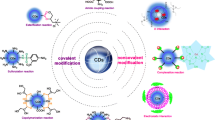Summaries
Since their introduction some 15 years ago DPP pigments have established themselves very well in the market and have quickly become the standard for opaque reds in high performance applications. In this review the story of the success of this latest class of pigments will be outlined with emphasis on its chemical and physical properties.
After a historical survey of the synthesis and reactivity of the DPP molecule, the correlation between molecular and solid state structure and its implications on physical properties will be discussed in general and with special stress on the importance of intermolecular hydrogen bonding. Finally, a series of examples will show briefly how application-relevant properties of DPP pigments can be optimised, eg improved colourspace by new crystal modifications or solid solutions, opacity/transparency control by appropriate ripening conditions, improved heat stability by growth-controlling additives and better rheological properties by adequate surface treatments.
Résumé
Depuis leur introduction il y a 15 ans, la famille des pigments DPP s’est très bien établie sur le marché et est devenue la référence des pigments rouges opaques pour les applications à haute performance. Dans cette revue, on retraçe l’historique couronné de succès de cette classe de pigments très récente, en insistant sur leurs propriétés chimiques et physiques.
Après une rapide mention de leur synthèse et de leur réactivité, on discutera de la corrélation entre les structures moléculaire et cristalline des pigments DPP, ainsi que leur implication sur les propriétés physiques, en particulier le rôle joué par la formation de ponts-hydrogène intermoléculaires. Finalement, on donneras une série d’exemples afin de montrer comment des propriétés d’application des DPP peuvent être améliorées, comme par exemple l’agrandissement de l’espace coloristique en changeant la modification cristalline ou en formant des solutions solides, l’opacité ou la transparence en choisissant des conditions de recristallisation correctes, l’amélioration de la stabilité thermique en ajoutant des additifs de contrôle de la croissance ou l’obtention de meilleures propriétés rhéologiques par des traitements de surface adéquats.
Zusammenfassung
Seit ihrer Einführung vor etwa 15 Jahren haben sich die DPP Pigmente sehr gut im Markt etabliert und sind rasch zum Standard für opake Rot in hochwertigen Anwendungen avanciert. Im vorliegenden Artikel wird die erfolgreiche Geschichte dieser neuesten Pigmentklasse mit Gewichtung auf chemischen und physikalischen Eigenschaften nachskizziert.
Im Anschluss an einen historischen Überblick zur Synthese und Reaktivität des DPP Moleküls wird der Zusammenhang zwischen molekularer und Festkörper-Struktur und deren Auswirkungen auf die physikalischen Eigenschaften diskutiert insbesondere im Hinblick auf die Bedeutung der intermolekularen Wasserstoffbrückenbindungen. Schliesslich wird anhand einer Reihe von Beispielen kurz gezeigt, wie sich applikatorisch relevante Eigenschaften der DPP Pigmente optimieren lassen, z.B. Erweiterung des Farbraums durch neue Kristallmodifikationen oder Feste Lösungen, Kontrolle der Opazität/Transparenz durch geeignete Nachreifung, verbesserte Hitzestabilität durch wachstumsregulierende Additive und bessere rheologische Eigenschaften durch adäquate Oberflächenbehand-lungen.
Similar content being viewed by others
References
Farnum D G, G Mehta, G G I Moore and F P Siegal,Tetrahedron Lett,29, 2549–52, 1974
Iqbal A and I Cassar, (Ciba-Geigy Ltd), US Patent 4, 415, 685, 1983
Iqbal A, R Kirchmayr, J Pfenninger, A C Rochat and O Wallquist,Bull Soc Chim Belg,97, 615–43, 1988
Sprake J M and K D Watson,J Chem Soc, Perkin Trans,1, 5, 1976
Rochat A C, L Cassar and A Iqbal, (Ciba-Geigy Ltd), EP 9, 4911, 1983
Zambounis J, Z Hao and A Iqbal,Nature,388, 131, 1997
Adashi A and S Nakamura,J Phys Chem,98, 1796–801, 1994
Hao Z, I Schlöder and A Iqbal, (Ciba-Geigy Ltd), EP 690, 058, 1994
Whitaker A,J Soc Dyers Colour,102, 66, 1986
Hao Z, A Iqbal, B Medinger and O Wallquist, (Ciba-Geigy Ltd), EP 704, 497, 1994
Iqbal A, J Pfenninger, A C Rochat and F Bäbler, (Ciba-Geigy Ltd), EP 181,290, 1986
Iqbal A, L Cassar, A C Rochat, J Pfenninger and O Wallquist,J Coat Tech,60, 37, 1988
Hays B G,Am Ink Maker,30, 270, 1984;ibid,10, 13, 1990; ibid, 11, 28, 1990
Bugnon P H and F Herren, (Ciba-Geigy Ltd), EP 466646, 1990
Jost M, A Iqbal and A Rochat, (Ciba-Geigy Ltd), EP 224445, 1986
Author information
Authors and Affiliations
Corresponding author
Rights and permissions
About this article
Cite this article
Lenz, R., Wallquist, O. DPP chemistry — continuous innovation. Surface Coatings International Part B: Coatings Transactions 85, 19–26 (2002). https://doi.org/10.1007/BF02699738
Issue Date:
DOI: https://doi.org/10.1007/BF02699738




